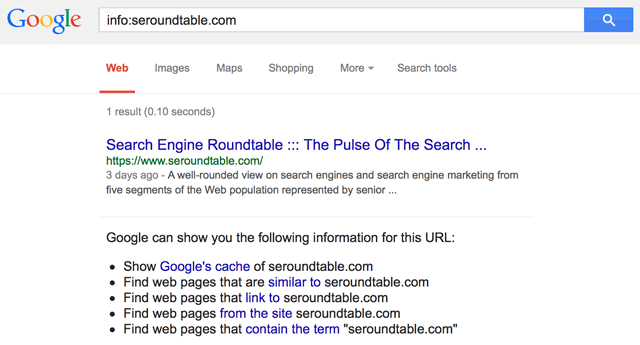Google is retiring the info command claiming it “was relatively underused” and that the new URL inspection tool gives users much of that data now anyway.
Info command. The info command, used in a syntax such as info:searchengineland.com, would return the canonical URL for a specific URL you entered using that info: syntax. The URL inspection tool will now show you the canonical URL for a URL you enter into it anyway. So Google said the info command is no longer needed.
Previously the info command showed not just the canonical URL view but also links to the cache, similar pages, links (which they also killed off), web pages from the site and matching terms. Google removed most of that data in November 2017.
Before November 2017 it looked like this:

After November 2017 it looked like this:

When is this happening? Soon the info command won’t return any results. “We’ve also changed URL Inspection tool so that it will display any Google-selected canonical for a URL, not just those for properties you manage in Search Console. With this change, we’re also retiring the info: command. This was an alternative way of discovering canonicals. It was relatively underused, and URL Inspection tool provides a more comprehensive solution to help publishers with URLs,” Google said.
Canonical section in URL Inspection tool. Now when you run a URL in the URL Inspection tool it will show you the user-declared canonical and the Google-selected canonical. The Google selected canonical is the URL selected by Google as the authoritative version of this page. Other versions can be served in search results, depending on factors such as the user’s device type or language. This is not available in the live test, as Google selects a canonical URL only after a page is indexed.
Here is a screenshot:

Why it matters. Now to see which URL Google thinks is the canonical URL, you need to have verified access to the site in Google Search Console and plug that URL into the URL Inspection tool. Previously, you were able to use the info command in the public Google search box.
For more details, see the Google blog post.
